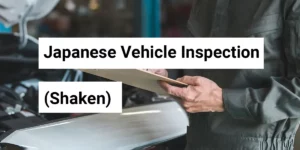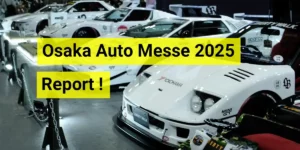
Japan is one of the few countries in the world that follows left-hand traffic. Why does Japan drive on the left side? In this article, we will delve deeply into the historical background and modern traffic conditions to explore the reasons behind this practice.
- 1. Traffic Conditions Before the Edo Period
- 2. Traffic Policies After the Meiji Era
- 3. Influence from Foreign Countries
- 4. Advantages and Disadvantages of Left-Hand Traffic
- 4.1. Advantages
- 4.2. Disadvantages
- 5. Relevance to Modern Traffic
- 6. Conclusion
- 7. Why Choose Provide Cars?
- 7.1. Official Membership at All Japanese Auto Auctions
- 7.2. Seamless Service from Proxy Bidding to Export
- 7.3. Four Flexible Pricing Plans
- 7.4. Start with a Free Membership
Traffic Conditions Before the Edo Period

Before the advent of automobiles, walking was the primary mode of transportation in Japan. During this time, samurai carried their swords on their left hips. If they followed right-hand traffic, their swords could collide when passing each other, potentially leading to conflicts. To avoid this, left-side passage naturally became the norm.
Additionally, riding horses was another common mode of travel, and mounting and dismounting from the left side was easier. This further contributed to the widespread adoption of left-side traffic.
By the late 1700s, horse-drawn carts were introduced to transport agricultural products. Drivers sat on the left side of the cart to control the horses and used a whip with their right hand. To prevent their whips from hitting other horses and to avoid collisions between carts, left-side traffic was naturally chosen.
Since most people are right-handed, driving on the left allowed them to wield weapons, control horses, and steer carts with their dominant right hand.
Interestingly, this left-side traffic habit of horse-drawn carts influenced traffic regulations introduced in Paris in 1794. These rules, spread by Napoleon across Europe, led many countries to adopt left-hand traffic. However, Britain resisted this shift and maintained left-hand traffic instead of switching to the right.
Traffic Policies After the Meiji Era
During the Meiji era, Japan actively adopted Western technologies for modernization. Railways were one such example, and in 1872, Japan’s first railway opened between Shinbashi and Yokohama. The railway construction was led by British engineers, and because British railways followed left-side traffic, Japan adopted the same practice.
As automobiles became more common, Japan maintained left-hand traffic to align with railway systems and avoid confusion. In 1924, left-hand driving was officially established by the Road Traffic Act.
Influence from Foreign Countries
The influence of Britain played a significant role in Japan’s adoption of left-hand traffic. In addition to the Meiji-era railway construction, Britain had legally mandated left-hand traffic in the 1800s, which likely influenced Japan’s decision.
Advantages and Disadvantages of Left-Hand Traffic
Advantages
- For right-handed individuals, left-hand traffic makes driving easier.
- When pedestrians cross the road, they first check the left side for incoming vehicles, making it easier to ensure safety.
Disadvantages
- Right-hand traffic is the global standard, making Japan an exception.
- In right-hand drive cars, visibility can be poor when overtaking.
Relevance to Modern Traffic
In modern Japan, increased automobile usage has led to heavier traffic and more accidents. While left-hand traffic benefits right-handed drivers, it also presents challenges due to its deviation from international standards. However, considering long-standing customs and existing infrastructure, switching to right-hand traffic is not a realistic option today.
Conclusion
Japan’s left-hand traffic system is the result of a combination of historical traditions, including samurai customs, horse-drawn cart practices, and the influence of British railway engineers during the Meiji era. The practice has persisted due to cultural factors unique to Japan, reinforcing its position as one of the few left-hand traffic countries in the world.
Why Choose Provide Cars?
Official Membership at All Japanese Auto Auctions
Japanese auto auctions operate as B2B (business-to-business) platforms, meaning general consumers cannot participate directly. Furthermore, auction participation requires strict membership screening and registration fees, which is why many used car dealers and exporters rely on intermediary auction agents rather than becoming direct auction members. However, using an intermediary adds extra fees, which ultimately increases the final cost for end consumers.
Provide Cars is a direct official member of all major Japanese auto auctions, eliminating the need for middlemen and their associated fees. Additionally, we do not charge any membership registration fees.
For those who want to learn more about Provide Cars > Provide Cars Features
For those who want to learn more about Provide Cars Staff > About Provide Cars
Seamless Service from Proxy Bidding to Export
Once you complete the free membership registration, we handle the entire process on your behalf. From proxy bidding to vehicle delivery, customers receive notifications but do not need to take any action.
Our comprehensive services include:
- Transport arrangements from the auction venue to the shipping yard
- Vehicle deregistration and export cancellation procedures
- Container & RORO (Roll-On/Roll-Off) shipping arrangements
- Export customs clearance procedures
All these steps are managed in-house to ensure a smooth and efficient process.
Four Flexible Pricing Plans
We offer four pricing plans tailored to different business needs:
- Basic Plan: ¥80K (for those purchasing 10 or more cars per month)
- Dealer Plan: ¥80K + 3% (for those purchasing 3 to 9 cars per month)
- Private Plan: ¥90K + 5%
- Premium Plan: ¥400K + 5%
| Cost Items | Company A (Yen) | Provide Cars (Yen) | Details |
|---|---|---|---|
| Consumption Tax (10%) | Charged | Free | The 10% consumption tax imposed by the Japanese government when purchasing a vehicle will not be charged to the customer. |
| Recycling Fee | Free | Free | The recycling fee imposed by the Japanese government at the time of vehicle purchase will not be charged to the customer. |
| Bidding Fee | 1,000~2,000 per vehicle | Free | As we are members of all auction houses, we do not charge any bidding fees. |
| Domestic Transport Cost | Variable or 80,000 flat fee | 5,500 to 60,000 | Transport costs from the auction venue to the nearest port will apply. If bidding at an auction with high transport costs, we will inform you. |
| Vehicle Deregistration & Export Application | Charged 10,000 to 20,000 | Free | The customs clearance fee is included in our service fee. |
| Customs Clearance Fee | Charged | Free | The customs clearance fee is included in our service fee. |
| Sea Freight | Charged | Charged | We offer both RORO and container shipping options, recommending the best and most affordable choices. Contact us for current shipping rates. |
| Service Fee | 100,000+5%~ | 80,000 | If 10 or more cars are purchased monthly and payment is completed within 3 days. |
| 80,000+3% | If 10 or more cars are purchased monthly, payment is completed within 3 days, and the vehicle price exceeds 1 million yen. | ||
| 90,000+5% | If 1-2 cars are purchased throughout the year. | ||
| 400,000+5% | If special handling is required for the vehicle (limited to one vehicle per month). |
For detailed pricing information, please refer to:
Start with a Free Membership
Sign up for a free membership to explore the vehicles available in Japanese auto auctions. As a free member, you can:
- Access unlimited free translations of auction sheets
- Consult our agents regarding auction participation and import regulations

Are you searching for the most reliable, efficient, and hassle-free way to import cars from Japan?
Partner with us and enjoy smooth, stress-free results!
- Absolutely FREE to get started
- Browse at your leisure
- Your information is 100% secure
no fees, no spam, just smooth car imports!


